As I continue to hark back to some of my favourite gaming moments of the last year, I find it strange that my thoughts aren’t instantly drawn to the obvious AAA titles that have been hanging around many GOTY lists for last year. And that’s not just because I’m yet to play some of them thanks to Santa insisting on only delivering presents towards the end of December, but also because I’ve actually had fun with some other titles this year, brought to me courtesy of my PlayStation Plus subscription.
Before we start, I’m well aware of the frustration of many in the PS Plus offering this year especially when compared to Xbox’s Games with Gold, and this isn’t an attempt to say any different. If anything from directly comparing the two, its fair to say that the Xbox line up is better, but given I don’t have an Xbox, this point is currently moot in my eyes. This is more a celebration of the fun I have had with some lesser (or even missed on release) titles that PS Plus has afforded me the opportunity to experience.
So, in no particular order, my PS Plus highlight this year…
Alienation
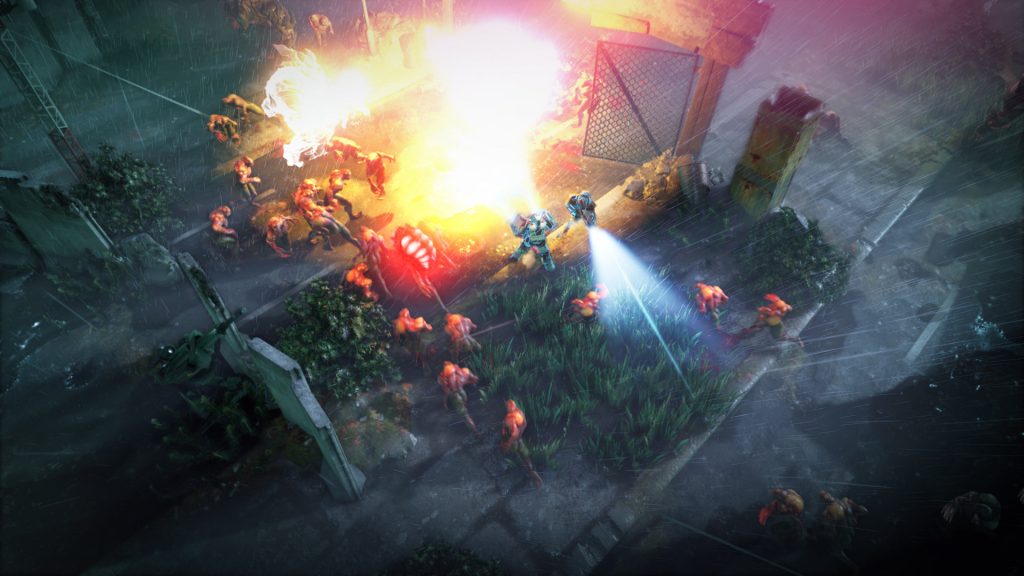
What I liked most about Alienation is its instant accessibility. Sure there’s a convoluted plot as to why these aliens have appeared and you need to do something to stop them, but what’s clear from the outset is that that ‘something’ is simple “bullets through squishy bits” thinking that anyone can get on board with. The game takes on an isometric view approach to gameplay, with a set amount of monsters to clear in each area to progress. The controls are simple enough to grasp, including various different weapons and healing options, and whilst there are choices to be made here, and RPG-like levelling up of weapons and equipment, it doesn’t take itself too seriously and never gets in the way of the gameplay.
The most amount of fun will naturally come with cooperative game-play ideally with friends online, although random matchmaking is also possible. Teaming up to deal with enemies throws up varying strategies to proceed, such as ganging up on enemies to dispose of them quicker, or the good old “I’ll take this portion of the screen” approach. And whilst the game never feels unfairly difficult, the challenge does ramp up and reward those teams willing to put some time into strategy for a moment, even if it means a quick pause for the all-guns-blazing approach.
There’s a fairly decent amount of maps, although I would have preferred perhaps a bit more variety in this area as missions often repeat maps rather than creating new environments, and whilst this is great for certain strategy planning it can make some of the missions feels samey. The missions themselves are reasonably short, and so lend themselves to a quick dip in and out for a few rounds before tackling a more meatier title. All in all though a fun little title that I would recommend.
Life is Strange
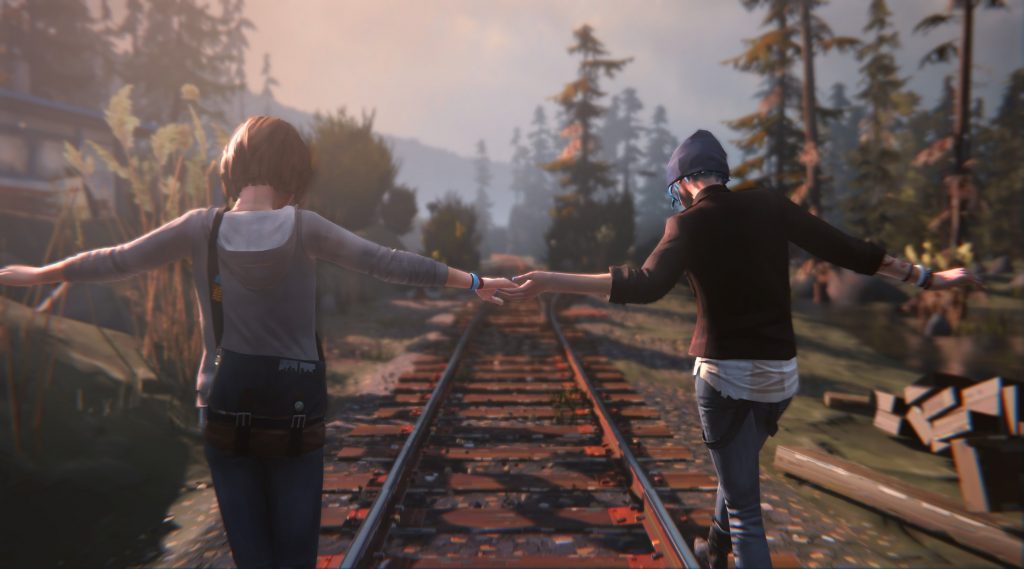
I’d read a lot about Life is Strange on release and I really meant to pick it up, but it was one of those titles that I never go around to. It sounded like a really intriguing title, that was different to other games I’d played, and I’m pleased to say the story had me hooked from the get-go. In the game you play as Max Caulfield, a photography student in the fictional town of Arcadia Bay. The game’s plot centres around Max’s newfound ability to rewind time, and thus manipulate her way through a series of events that occur in the following few days, culminating in a thrilling all-or-nothing decision. The story explores Max’s relationships with a variety of students at her school, her friends and family as well her back story, and takes place is a variety of locales around Arcadia Bay.
The game is played from a third-person perspective and revolves around conversation trees and actions that once completed, can be redone using Max’s rewind ability to open up new conversations, discover new secrets, or retry actions having learned something new. It’s essentially a trial and error mechanic that is executed well throughout and the game tasks you with different types of puzzles and actions throughout so the gameplay doesn’t get too stale. I also enjoyed the fact that there are choices in the game, that will have an impact on the story – similar to a TellTale game – and like those games, there’s isn’t necessarily a correct approach, and even the final decision you make is up to you.
What I liked most about this game though, was its storytelling and characters. I believed a lot of what was happening because of how well written it was, and Max’s relationship with her old pal Chloe has some particular highlights throughout the game. You’ll go from backing characters to resenting them for a while and vice versa because of clever storytelling and assumptions that you make, and the experience is all the richer for it.
Overall an excellent title, well worth your time.
Killing Floor 2
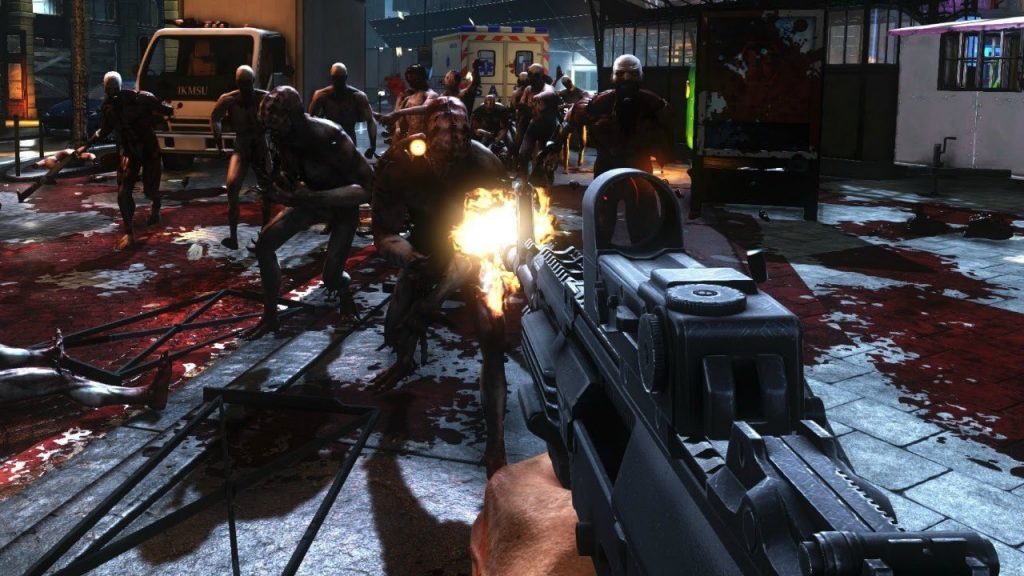
I’m going to come out and say something controversial right from the start here, and say that I prefer Killing Floor 2 to Call of Duty Zombies, any iteration you would care to offer up. Yep I know, that seems like a crazy statement and there’s a lot of love around for Kino Der Toten or its various offspring in future games, but I still prefer Killing Floor 2.
I’m not going to spend ages on the set-up, it’s a first-person affair, with waves of zombies attacking you from all sides, and your job is to survive each wave to progress to the next. This game separates itself from COD Zombies by firstly having all the map (generally) available from the outset, rather than having to pay to unlock areas, meaning there is more benefit in learning entire maps and good choke points. Also at the end of each round you open up a random pod on the map which you must run to, to refill your health and ammo with earned currency before the timer resets and the next wave arrives. Another interesting dynamic is that of weight. Different guns weigh different amounts and you can only carry a certain weight total. Also, and more crucially, the more weight you carry the slower you can move, placing more emphasis than usual on choosing a load out that is a good balance of firepower and agility to get yourself out of a tough spot.
The game also features a class system whereby you choose from a list of classes (or playstyles). Each of these classes comes with their own perks, that you unlock as you level up the class. This progression feels like a big draw to re-playing the game beyond “trying to get further than last time”. You want to play again not least because of how much of a blast it is but because you know your character will improve and be able to hold their own in future fights.
Like its COD Zombies counterpart this game is best played with friends communicating to each other and sticking together working as a team. Ideally you’ll have a couple of tanks and a healer to help support the waves of zombies, as well as the random boss that appears at the end of every pre-agreed set of waves. The difficulty of said waves can also be changed, resulting in a spike in XP if you feel up to the challenge.
All things considered it feels like a more rewarding and wholesome experience than COD Zombies does and has kept me coming back a lot this year.
Until Dawn

I used to love the Choose Your Own Adventure books from way back when, many an hour whiled away in some of Ian Livingstone’s greatest works trying to not to pick the outcome that would lead to an early grave. So I’ve always had a fondness for games that try to recreate this magic, and this is what really piqued my interest when this game dropped as a free game in July last year. I’d heard positive things about the game – a good setting which was genuinely scary and intriguing. I’d also heard that it was quite a challenge to keep all the characters alive until, well, dawn, which harked back to those challenging books from yesteryear.
What I was expecting from Until Dawn was a horror version of a TellTale game, where I have choices to make, which make some slight tweaks to the story but the overall net outcome remains the same for the purposes of telling a story that makes sense. But I was pleasantly surprised with how this game handles the premise of choice and implication, and how it weaves it into the mechanics of the game. Firstly the choices you make can result in no less than the death of every single character in the game, which as stakes go is certainly a lot higher than most other offerings. Even if some of the characters are overly dramatic, it would take a special kind of sadist to want them all to die, at least on the first playthrough.
The cause and effect model is further explored with the Butterfly Effect mechanic, whereby certain decisions will have further, greater ramifications later on, rather than be apparent in the moment. This can open up different story options, spell death for a character, or change the way characters interact later on. It feels like a more meaningful ramification than the traditional TellTale “XXXX will remember that” which can often feel like a throwaway mechanic that you never realise the impact of. The game also introduces collectibles in the form of totems which when found show a short video sequence of something yet to happen in the story, giving you a slight upper hand in a future decision. I really enjoyed this idea as it rewarded discovery of these items, but the way in which they are executed never reveals too much, so you’re always left wondering the best way to leverage the info you have just garnered.
All in all, whilst the story isn’t going to win any awards, I really enjoyed my time with Until Dawn. The story is deep and flexible enough to feel like you are impacting it with decisions you make, and mechanics like totems and the Butterfly Effect give an extra sense of cause and effect that I really enjoyed. Definitely recommended if you’re a fan of TellTale or the horror genre.
Just Cause 3 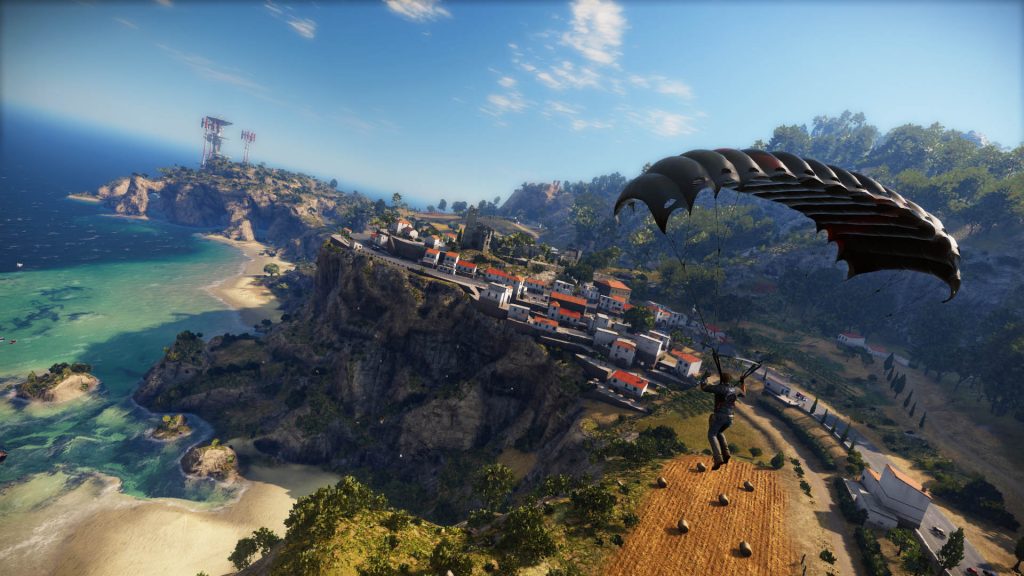
Who doesn’t like blowing stuff up, am I right? There’s just something cathartic about causing a bit of harmless destruction, and that’s why Just Cause resonated so well with me. It just scratched my anarchy itch in just the right place. Being a newcomer to the Just Cause series, I didn’t really know what to expect, but what I was presented with was a lavish, huge open world to explore, a nice mix of glorious landscapes and terrain with living, breathing towns ripe for liberating.
The game sees you once again reprise the role of Rico Rodriguez, as everyone’s favourite anti-dictator mercenary, this time in his home of Medici to overthrow General Di Ravello who has seized control. Gameplay revolves around using an array of weapons to kill enemies and cause havoc, as well as utilising Rico’s ever-expanding toolkit of gear and vehicles to travel around and continue the carnage. Missions will generally revolve around liberating certain areas by either removing the military threat or destroying Di Ravello’s influence (usually in the form of billboards, speaker systems etc).
What I most enjoyed in this game is the freedom it gives you to tackle certain tasks. Sure you could simply fill that speaker full of bullets to destroy it, or you could use your grappling hook to pull the structure to the ground. This freedom extends to the many ways to traverse Medici, be it through the new Wingsuit mechanic, using the grappling hook in tandem with a parachute to float high in the air, or even traditional vehicular travel, be it by land, sea or air. It means you can play the game your way, and people’s experiences of the game will always be very different.
Just Cause tackles this plethora of options by adding in challenges to demonstrate different functionality. Be it flying challenges with the new wingsuit, or having to destroy targets with the minigun on a helicopter, these challenges are varied with a learning curve that stretches you without ever feeling out of reach of mastering. So whilst offering a separate part of the game that completionists will lap up, it also subtly skills you up on all the mechanics available, essentially ginving you the skills you need to play your way without ever telling you that’s what it’s doing. And before you know what’s happening, you’re traversing Medici in all kinds of ways with confidence and with a big smile on your face.
It’s this clever design of introducing the player to have fun on their own terms which makes this game such a joy to play.
Child of Light
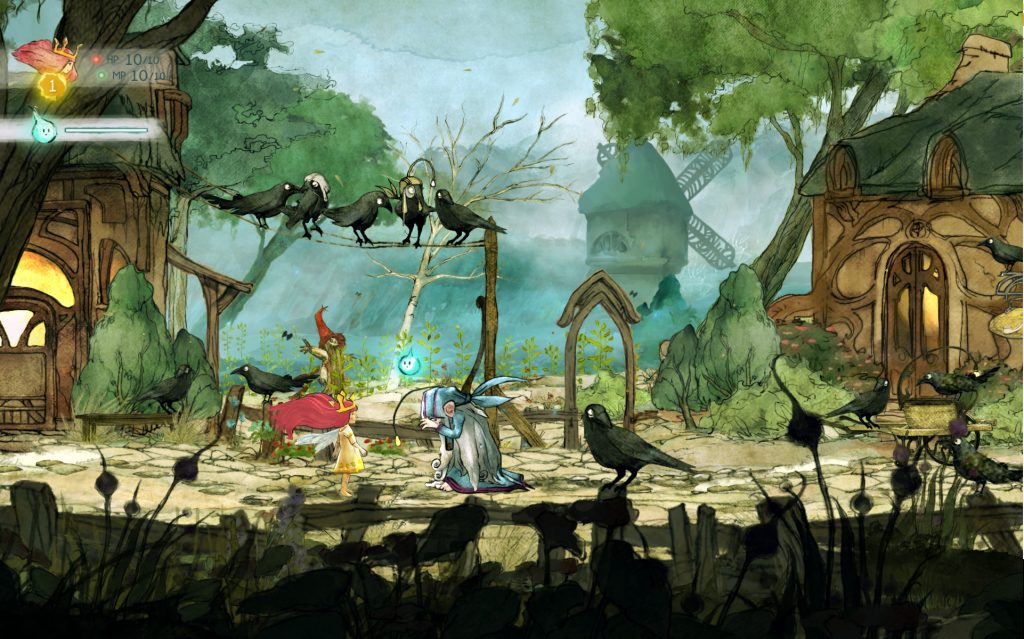
A change of pace and gameplay style now for Ubisoft Montreal’s side-scrolling RPG, Child of Light. The game is a mash-up of side-scrolling platforming with a combat element thrown in, and defeating enemies through levels up characters through EXP. Initially you control Aurora and her glowing friend Igniculus, but over the course of the game different characters will join your party, each with different traits in combat. And with a party size of 3, as the game progresses, it rewards strategy of choosing the right party set-up and ensuring you are levelling up the right skills to give you flexibility in battle.
The battles themselves take place separately from the platforming – think Final Fantasy games where you are whisked off to a separate arena for all fights – but Child of Light favours on-screen enemies you engage to start battles rather than random encounters. Once in the battle arena, there is a time mechanic that is utilised throughout, with different attacks from different characters taking differing amounts of time to execute. The skill comes from successfully choosing the right options of attack and defence depending on when an enemy will next attack, and whether your character has enough time to get a hit in before the enemy. If you try to attack, but an enemy gets a hit in first, your character will be hit and have to be reset, and their attack started again, wasting valuable time. Thankfully there is more skill to this, as you can control Igniculus to “pause” an enemy meaning their attack will happen later, giving you a larger window to hit first etc.
If it sounds complicated, that’s because it actually is more involved than your standard RPG fare, but once the mechanics click with you, you’ll soon be countering enemy attacks and defending against incoming attacks like a boss, and there’s something incredibly satisfying about mastering the system and overcoming a tricky boss battle set up because you took advantage of all the mechanics on offer well.
The charming art direction and story also make this title into a solid little package. It means that whilst there is surprising depth in the battling, there’s also delight to be had when progressing the story, and learning more about Aurora’s background and her quest to save her father. A little way into the game you also gain the ability to fly, which makes controlling Aurora through the game a joy, and makes the entire game world freer to explore. As such, you’ll find once you’ve got to grips with the combat, this will be a game you’ll want to see through to the end.
Hue
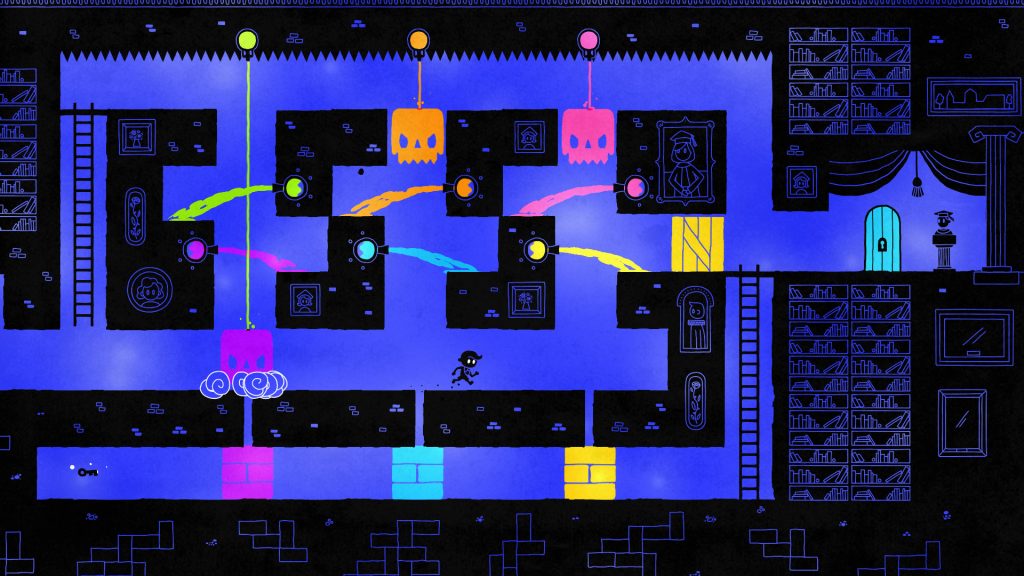
Up to this point all the game on the list have either focussed on a story well-told, tearing seven shades out of something, or both. But I’ll always have a place in my heart for a solid puzzler, and that’s exactly what we have in Fiddlesticks’ cute platform-puzzler, Hue. You play as the titular Hue, who starts out in a monochrome world devoid of the discovery of colour. Then as Hue progresses he discovers a colour at a time, and thus the puzzling begins.
Upon discovering a colour, Hue can change the background to that colour. This means that anything in the world that is this colour becomes invisible, and for the purposes of the game ceases to exist until the background colour is changed. So for example, if there is a yellow block in Hue’s path, if he changes the background to yellow, the block disappears and he can get past. However as soon as the background colour changes from yellow, that block reappears again. And the task is to get Hue to the exit on each puzzle to progress.
As Hue discovers more colours, by default the type of puzzles can get more complex, but as well as this the game also introduces different mechanics and obstacles alongside the wider colour palette. This could be anything from pressure switches, to deadly lasers, to paint the automatically changes the colour of objects. What this means is the developers create ever more challenging puzzles without them ever feeling repetitive, despite the simple colour mechanic being the main driver of solving each one. This coupled with the short time it takes to complete a puzzle means it’s the ideal dip into game for a bout of casual play to test your grey matter, and if you’re anything like me you’ll find you’ll be saying to yourself the ever-familiar “just one more” line to see if you can figure out the next puzzle first time.
Hue is by no means the biggest game, but its a good example of a game taking a simple concept and exploring how to eke the most from it without outstaying its welcome. Recommended.
Darksiders II: Deathinitive Edition
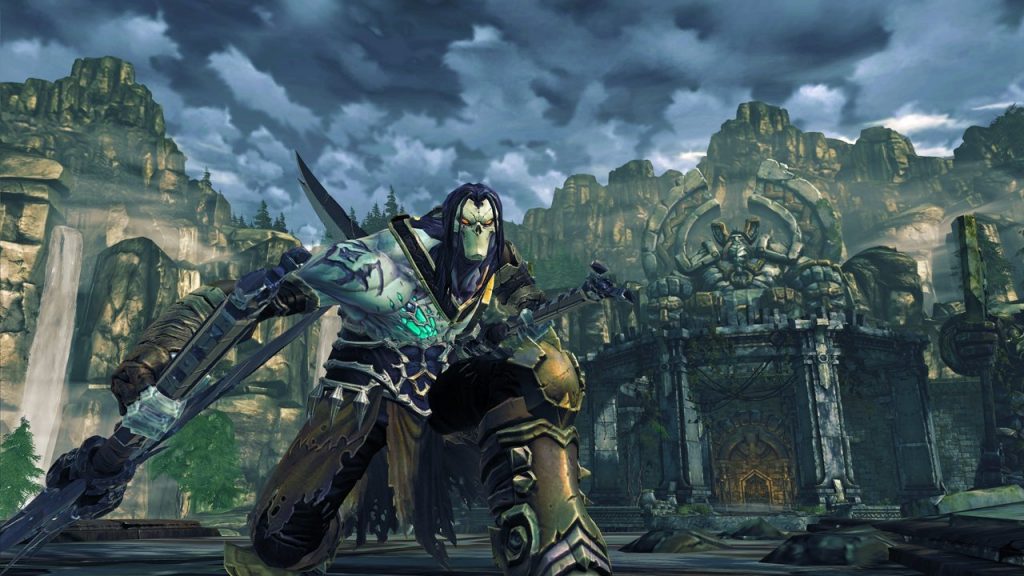 Despite being the last on this list, Darksiders II: Deathinitive Edition represents the first and only example here of a franchise I’ve played before and wanted more of, and so it didn’t take much for this game to oust other titles vying for my playtime when it was offered free in December. The original Darksiders was a nice combination of simple, but effective 3rd-person combat, with platforming and puzzle elements thrown in the mix. It made for an unashamed Zelda-clone, sometimes right down to the items involved (hookshot anyone?), but its different setting and more Uncharted-like platforming made it feel different enough to not feel like you were playing as everyone’s favourite Hylian in different clothes, without losing the appeal that that franchise undoubtedly has.
Despite being the last on this list, Darksiders II: Deathinitive Edition represents the first and only example here of a franchise I’ve played before and wanted more of, and so it didn’t take much for this game to oust other titles vying for my playtime when it was offered free in December. The original Darksiders was a nice combination of simple, but effective 3rd-person combat, with platforming and puzzle elements thrown in the mix. It made for an unashamed Zelda-clone, sometimes right down to the items involved (hookshot anyone?), but its different setting and more Uncharted-like platforming made it feel different enough to not feel like you were playing as everyone’s favourite Hylian in different clothes, without losing the appeal that that franchise undoubtedly has.
I enjoyed the experience overall, and was hoping Darksiders II was more of the same. And I’m “pleased” to say that’s exactly what it is.
I use inverted commas there because it feels rich to praise a game fore being so similar to it’s predecessor. Good sequels should build on previous iterations with new ideas and better execution, and I’d by lying if I said Darksiders II does this. It really doesn’t. It sticks to its guns form the first game so much it can feel very samey at times, and if I was critiquing this game on what it brings new to the table, I’d be much more critical.
However what I was looking for was more of the same, and as such I found myself getting absorbed in the gameplay and action on offer without really a care for the fact things haven’t really evolved at all. I wanted more Darksiders, and I had it. For free. I enjoy the relatively fluid combat, the satisfying platforming, and the smug satisfaction that comes from beating a boss on the new Deathinitive difficulty setting. The story, for what it is, is engaging enough, and the optional sidequests add more content to the story. On the whole, an entertaining title, which whilst it doesn’t push any boundaries, it does this type of game and the series justice.
And that concludes my list of PS Plus games that I have enjoyed this year. I’ve caught up on a few games I’ve missed like Life is Strange, and found ones I never knew existed like Hue, and enjoyed them all for very different reasons.
Let me know what you think of the above games, or indeed any others free with PS Plus or Gold with Games that were strong moments for you last year.

